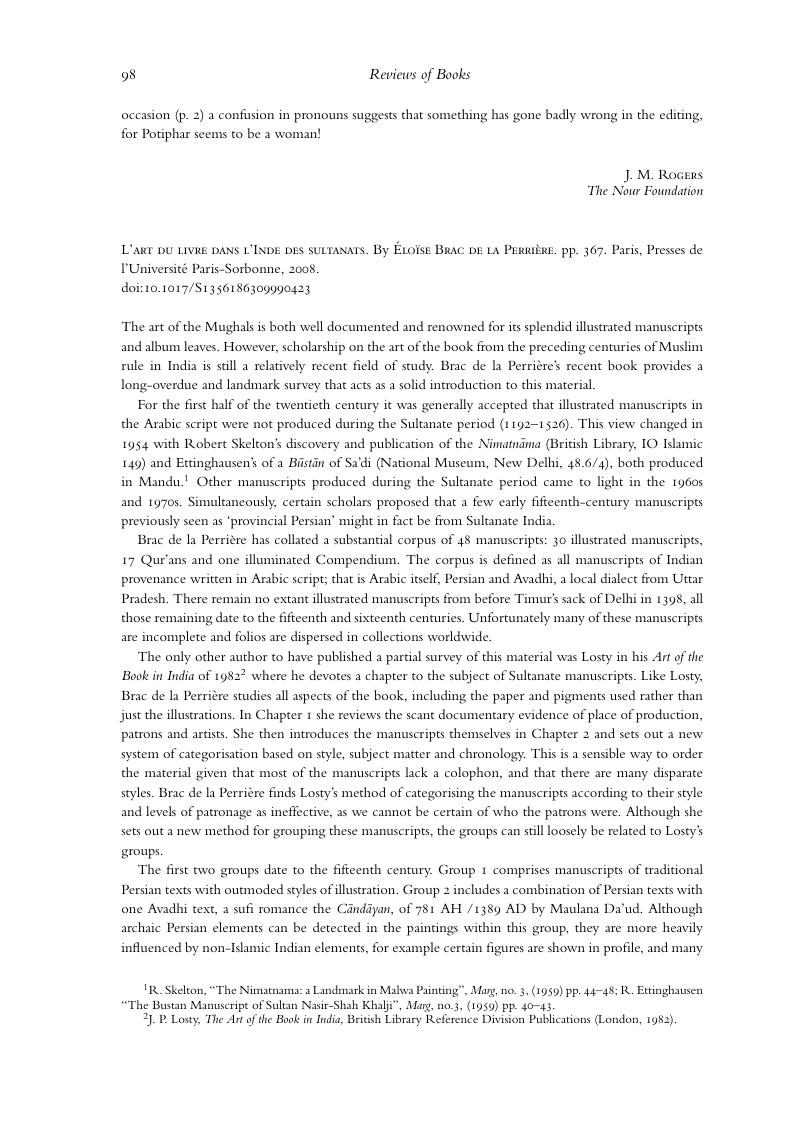No CrossRef data available.
Article contents
L'art du livre dans l'Inde des sultanats. By Éloïse Brac de la Perrière. pp. 367. Paris, Presses de l'Université Paris-Sorbonne, 2008.
Published online by Cambridge University Press: 30 November 2009
Abstract

- Type
- Book Review
- Information
- Copyright
- Copyright © The Royal Asiatic Society 2009
References
1 R. Skelton, “The Nimatnama: a Landmark in Malwa Painting”, Marg, no. 3, (1959) pp. 44–48; R. Ettinghausen “The Bustan Manuscript of Sultan Nasir-Shah Khalji”, Marg, no.3, (1959) pp. 40–43.
2 J. P. Losty, The Art of the Book in India, British Library Reference Division Publications (London, 1982).
3 Blair, S. S., Islamic Calligraphy (Edinburgh, 2007), p. 389Google Scholar.
4 Y. Porter, Painters, Paintings and Books, An Essay on Indo-Persian Technical Literature, 12th–19th Centuries (New Delhi, 1994).
5 Her point of note is the reference to the Visanta Vilāsa of 1451 A.D. (Washington D.C., Freer Gallery) as a secular text when it is in fact a devotional text dedicated to the love of the Hindu deities Krishna and Radha.




